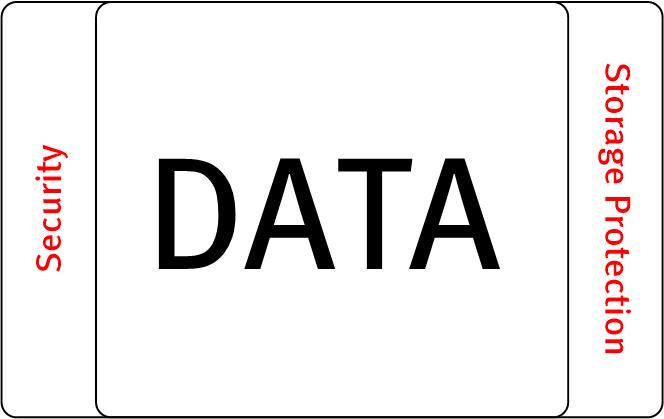There are currently a significant number of vulnerable MongoDB databases which are being attacked by ransomware attackers, and even though the attacks are ongoing, it’s worth taking a moment or two to reflect on some key lessons that can be drawn from it.
If you’ve not heard of it, you may want to check out some of the details linked to above. The short summary though is that MongoDB’s default deployment model has been a rather insecure one, and it’s turned out there’s a lot of unsecured public-facing databases out there. A lot of them have been hit by hackers recently, with the contents of the databases deleted and the owners being told to pay a ransom to get their data back. As to whether that will get them their data back is of course, another issue.
The first lesson of course is that data protection is not a single topic. More so than a lot of other data loss situations, the MongoDB scenario points to the simple, root lesson for any IT environment: data protection is also a data security factor:
For the most part, when I talk about Data Protection I’m referring to storage protection – backup and recovery, snapshots, replication, continuous data protection, and so on. That’s the focus of my next book, as you might imagine. But a sister process in data protection has been and will always be data security. So in the first instance in the MongoDB attacks, we’re seeing the incoming threat vector entirely from the simple scenario of unsecured systems. A lackadaisical approach to security is exactly what’s happened – for developers and deployers alike – in the MongoDB space, and the result to date is estimated to be around 93TB of data wiped. That number will only go up.
The next lesson though is that backups are still needed. In The MongoDB attacks: 93 terabytes of data wiped out (linked again from above), Dissent writes that of 1138 victims analysed:
Only 13 report that they had recently backed up the now-wiped database; the rest reported no recent backups
That number is awful. Just over 11% of impacted sites had recent backups. That’s not data protection, that’s data recklessness. (And as the report mentions, 73% of the databases were flagged as being production.) In one instance:
A French healthcare research entity had its database with cancer research wiped out. They reported no recent backup.
That’s another lesson there: data protection isn’t just about bits and bytes, it’s about people’s lives. If we maintain data, we have an ethical obligation to protect it. What if that cancer data above held some clue, some key, to saving someone’s life? Data loss isn’t just data loss: it can lead to loss of money, loss of livelihood, or perhaps even loss of life.
Those details are from a sample of 118 sourced from a broader category of 27,000 hit systems.
So the next lesson is that even now, 2017, we’re still having to talk about backup as if it’s a new thing. During the late 90s I thought there was a light at the end of the tunnel for discussions about “do I need backup?”, and I’ve long since resigned myself to the fact I’ll likely still be having those conversations up until the day I retire, but it’s a chilling reminder of the ease at which systems can now be deployed without adequate protection. One of the common responses you’ll see to “we can’t back this up”, particularly in larger databases, is the time taken to complete a backup. That’s something Dell EMC has been focused on for a while now. There’s storage integrated data protection via ProtectPoint, and more recently, there’s BoostFS for Data Domain, giving systems distributed segment processing directly onto the database server for high speed deduplicated backups. (And yes, MongoDB was one of the systems in mind when BoostFS was developed.) If you’ve not heard of BoostFS yet, it was included in DDOS 6, released last year.
It’s not just backup though – for systems with higher criticality there should be multi-layered protection strategies: backups will give you potentially longer term retention, and off-platform protection, but if you need really fast recovery times with very low RPOs and RTOs, your system will likely need replication and snapshots as well. Data protection isn’t a “one size fits all” scenario that some might try to preach; it’s multi-layered and it can encompass a broad range of technology. (And if the data is super business critical you might even want to go the next level and add IRS protection for it, protecting yourself not only from conventional data loss, but also situations where your business is hacked as well.)
The fallout and the data loss from the MongoDB attacks will undoubtedly continue for some time. If one thing comes out of it, I’m hoping it’ll be a stronger understanding from businesses in 2017 that data protection is still a very real topic.
[Edit/Addendum]
A speculative lesson: What’s the percentage of these MongoDB deployments that fall under the banner of ‘Shadow IT’? I.e., non-IT deployments of systems. By developers, other business groups, etc., within organisations? Does this also serve as a reminder of the risks that can be introduced when non-IT groups deploy IT systems without appropriate processes and rigour? We may never know the percentage breakdown between IT-led deployments and Shadow IT led deployments, but it’s certainly food for thought.


Just quick correction: 118 analysed makes your 11% correct. Based on your link.
I’m not sure what you mean? Only 13 of the 118 sampled reported recent backups – that’s 11.0169%. (I wouldn’t have thought the fractional part of the percentage was necessary.)